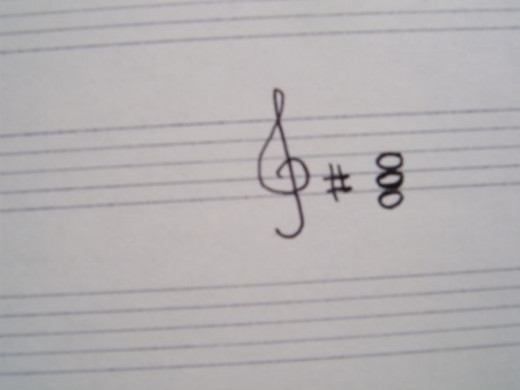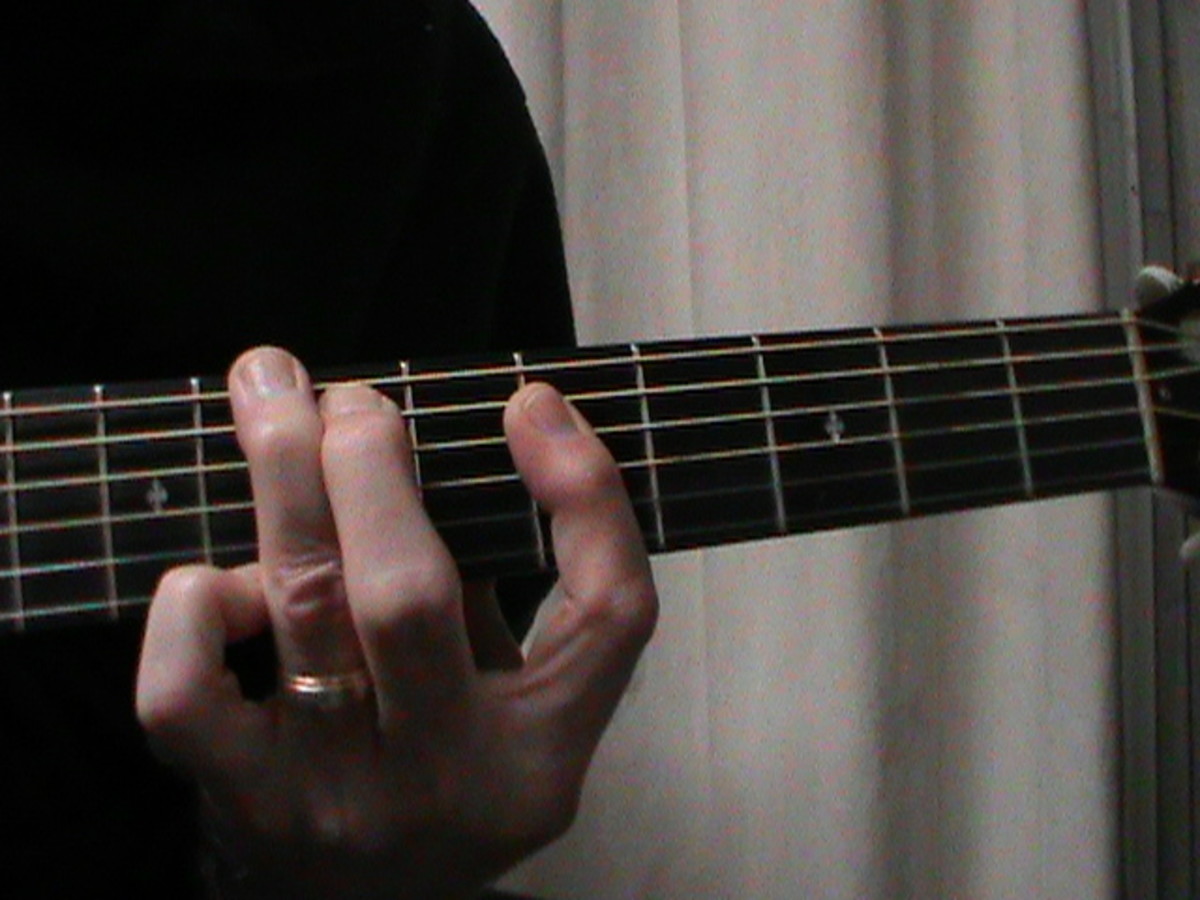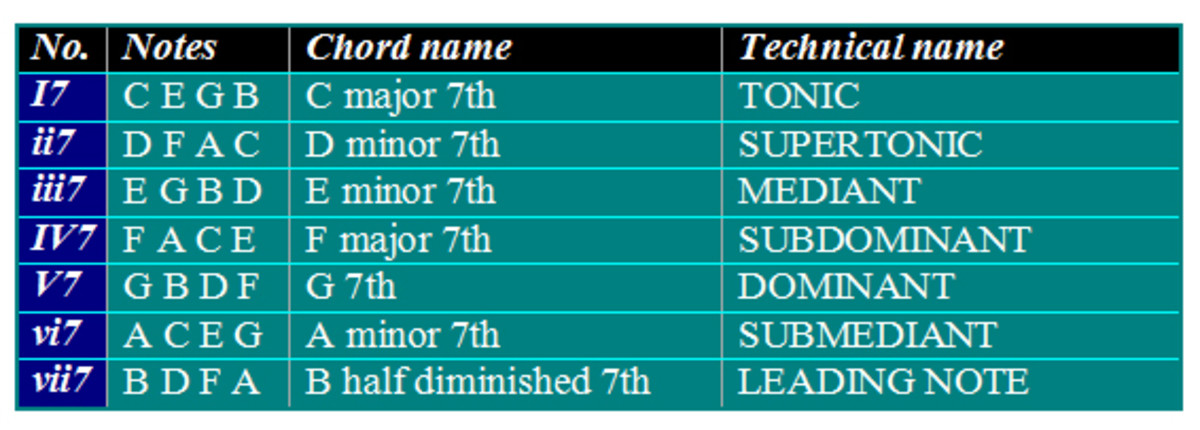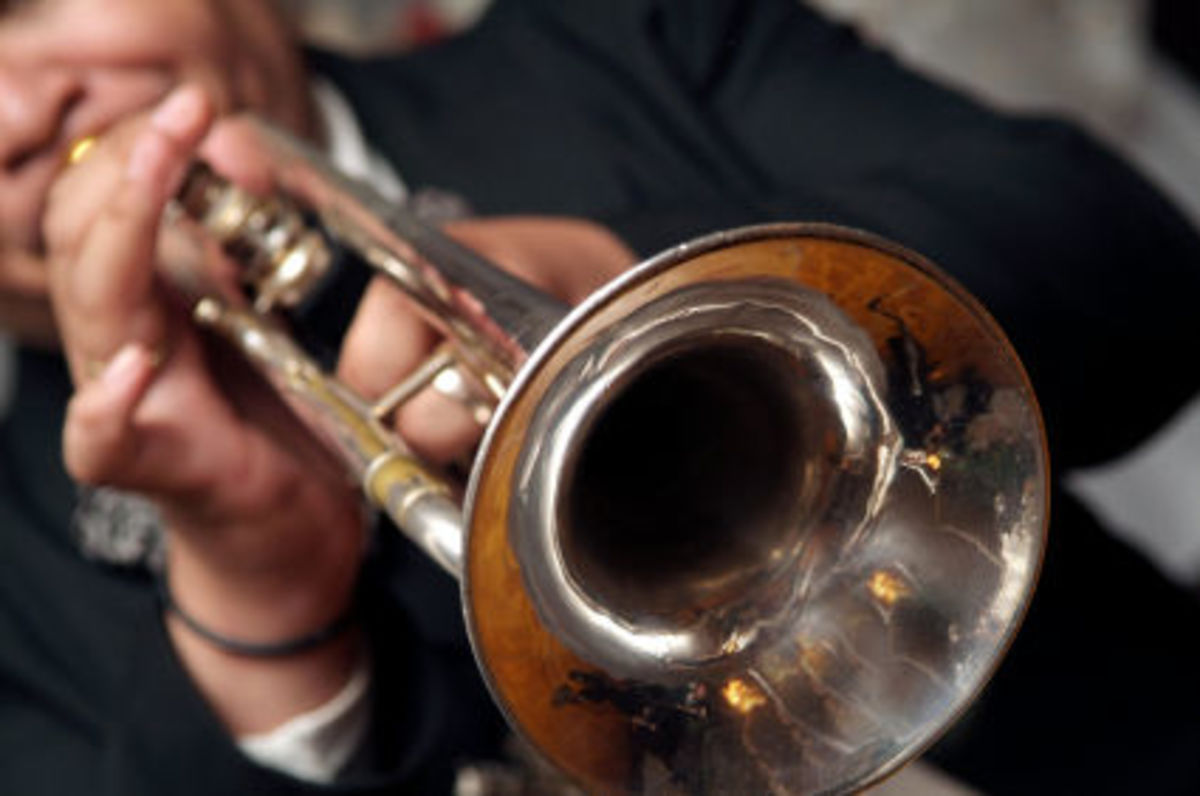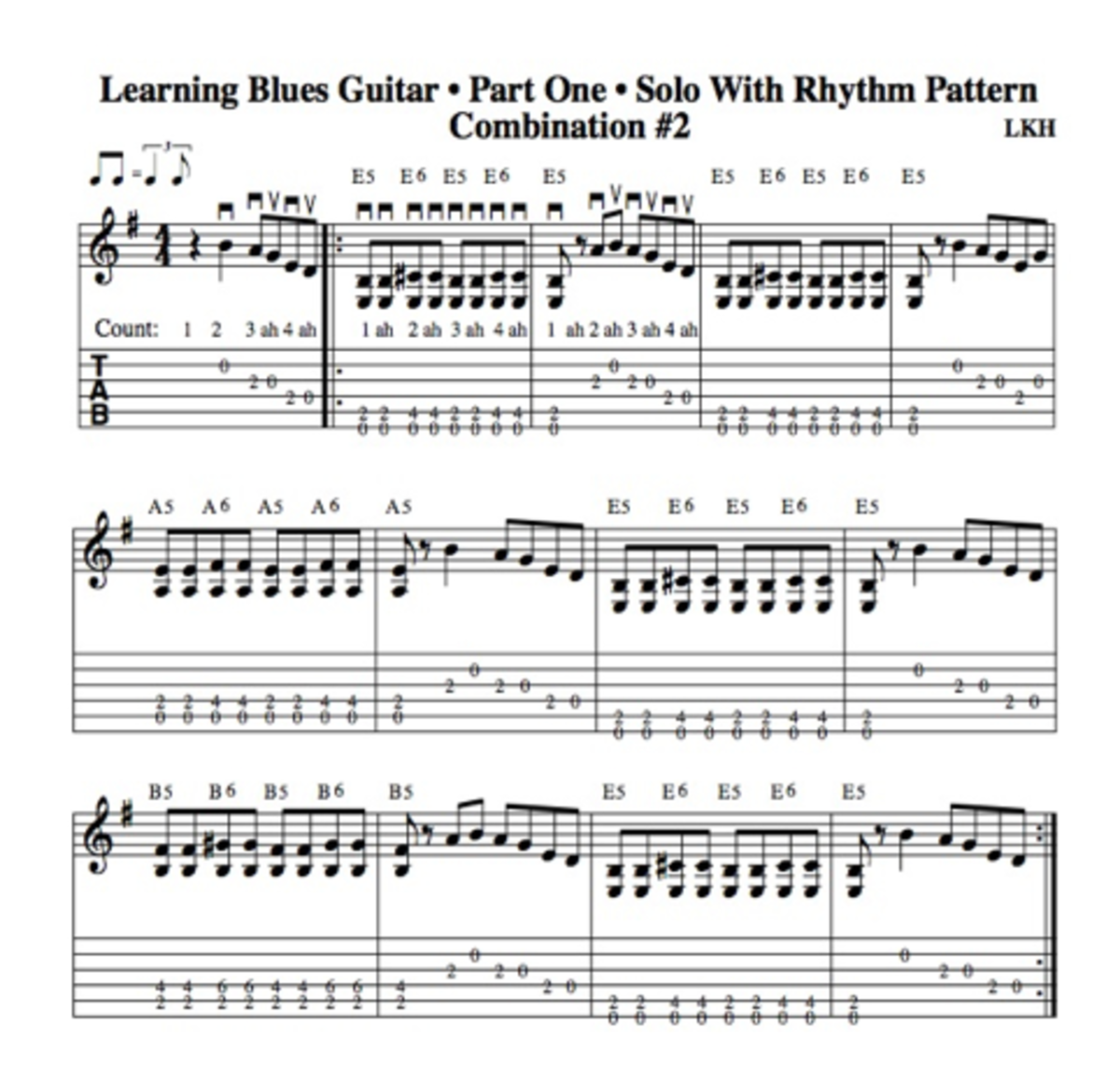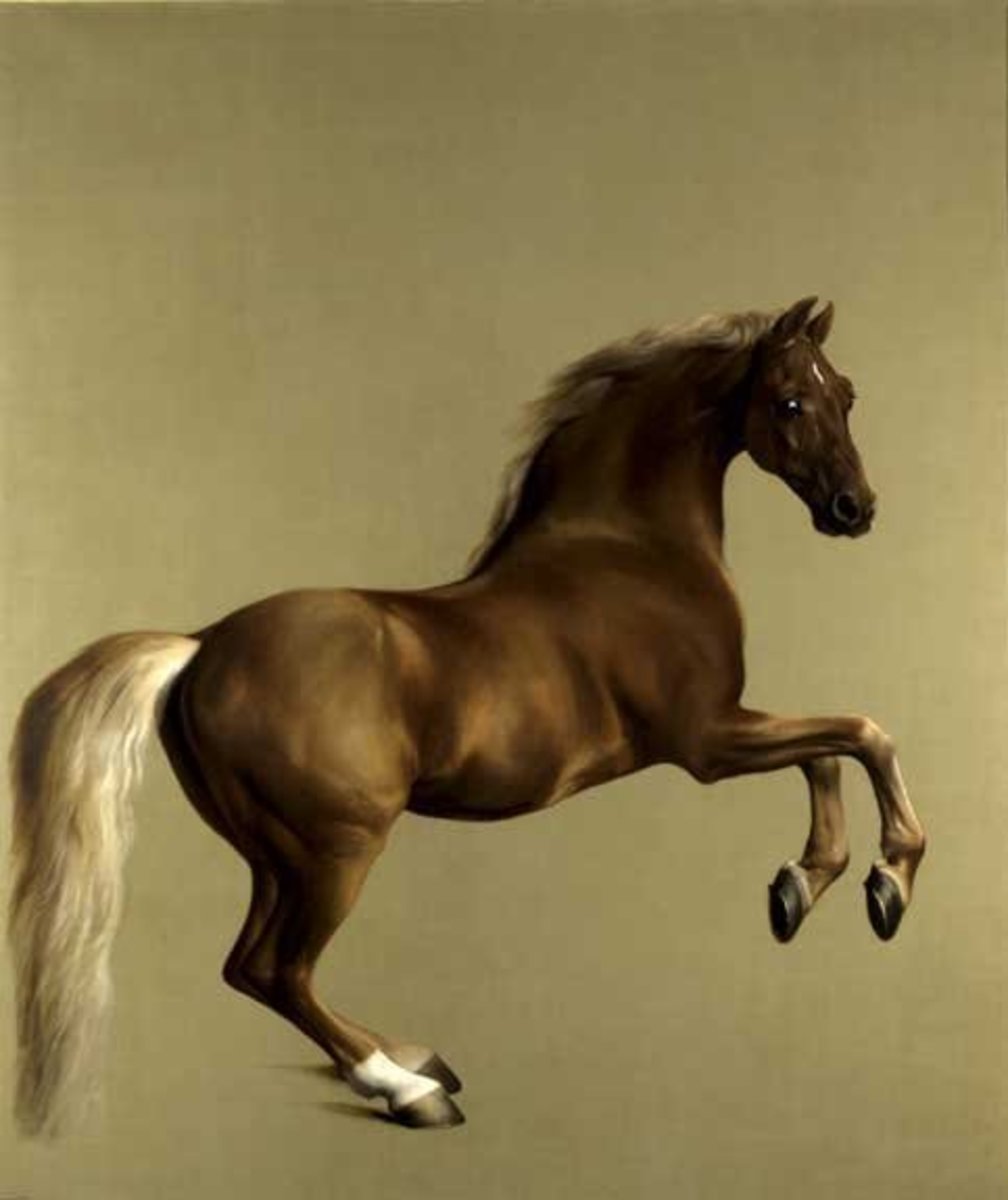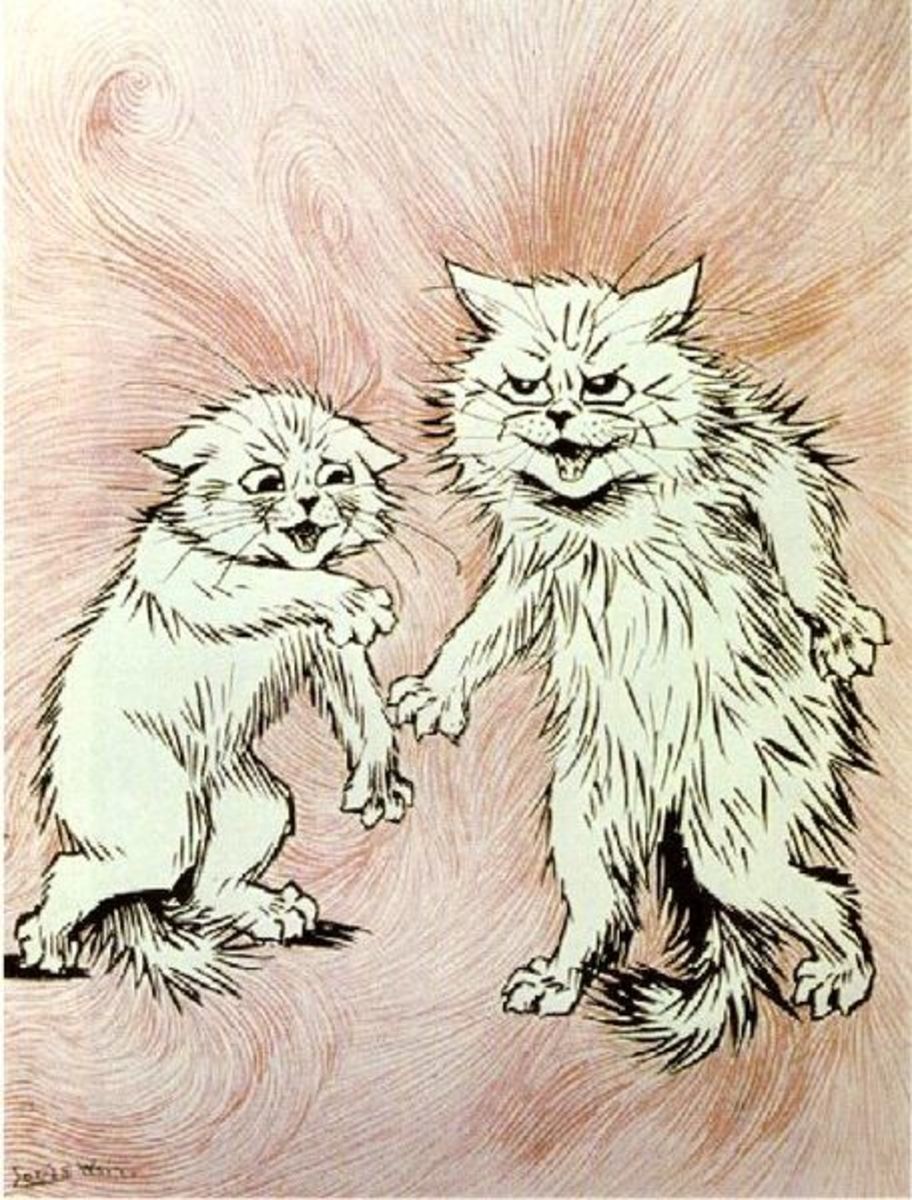Theory of Music (1)

Theory of music can be fun
Even if you don't play an instrument you can get lots of fun from learning the theory of music. It's all quite logical and is the culmination of centuries of experimenting with how to express music on paper. I hope you will enjoy this first of several lenses on this topic.
We will use a photo of a piano to help us understand what we are doing. You do not need any previous knowledge of the piano or theory ,as we will work in easy steps ,to build up the picture of how music is written down.
Using the keyboard
On the keyboard you can see where everything is in a scale. The tones and semitones.
C major on the keyboard
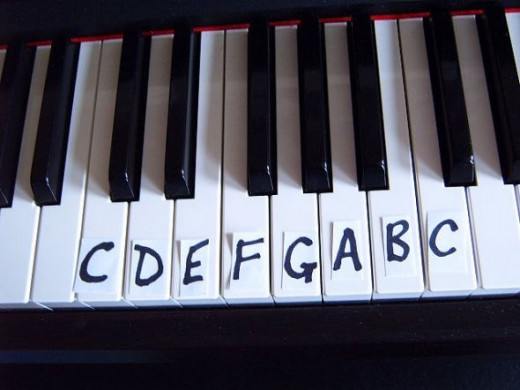
Using the keyboard
You do not need to play the piano but using the keyboard to work out your scales is very useful. The above picture shows you the keyboard with the notes of the C major scale. I have simply used paper squares to name the notes. Here we start at the left-hand C and move along to the right-hand C.
At first look the notes appear to be equally spaced. However this is not so. If you look at the keys further in than the paper notes you can see there is a pattern. Between C and D you have a black note, and between D and E. But when you come to E and F there is no black note between. The distance between a note and its nearest neighbour ,whether black or white is called a semitone. Two of these distances make a tone. So between C and D we have a tone, and again between D and E. But between E and F we only have a semitone. Can you find another semitone in the scale? Yes that's it, between B and C.
Now you can see that the first half of the scale has the same pattern as the second half. This means that we can take the top half of the scale to start the scale of G major because the major scale always has this same pattern of tones and semitones. The pattern is Tone,Tone,Semitone Tone (between the two halves) Tone,Tone,Semitone.
In the picture below you can see the C major scale written. I have linked with square brackets the semitones. In front of the music to the left is the treble clef. The bottom of this curls around the second line of the stave of five lines, telling us that a note on that line, that is with the line going through it, will be G. If you do not put a clef at the beginning we do not know what the notes are. There are several clefs but we just deal with the treble and bass to start with.
The notes have to be written with care
Each note must be written precisely, either with a line going through it, or exactly fitting in a space
The notes of the C major scale on paper
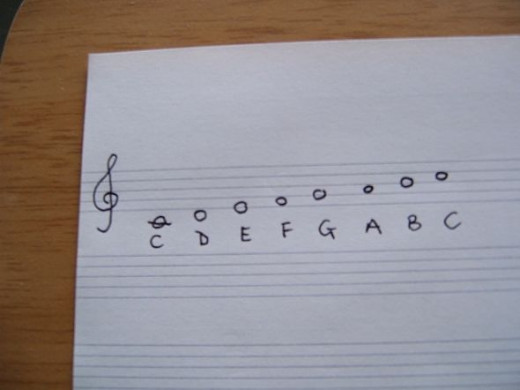
The G major scale
As I said above, to make the G major scale take the last four notes of the C major scale. Then add the next four notes, but instead of using the note F use F sharp. You will see that this keeps the correct pattern of tones and semitones, the distances between the notes. If you play it on the piano you will have exactly the same tune as the C major, but at a higher pitch.
Guess what! To get the next scale we take the last four notes of G major, including the F sharp and this gives us the beginning of the D major scale. Each time we are moving up five notes.
Now you may well think we have only moved up four notes but music is not like math. We always include all the notes used. So we count C,D,E,F,G and those are our five. The fifth note of the scale is called the Dominant and has a special relationship with the first note of the scale, which is called the Tonic.
The keys go around in a cycle of fifths. It is easier to learn them this way as at this stage we keep adding a sharp to the key signature each time we move up five notes.
The G major scale on the keyboard
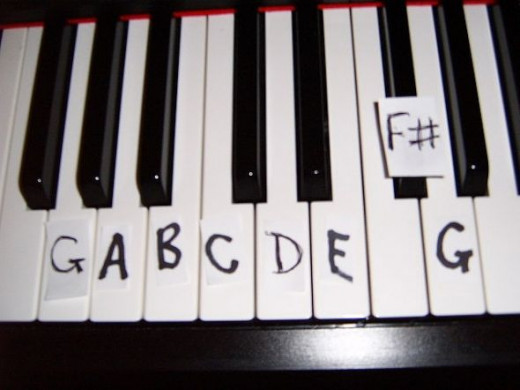
G major scale on paper
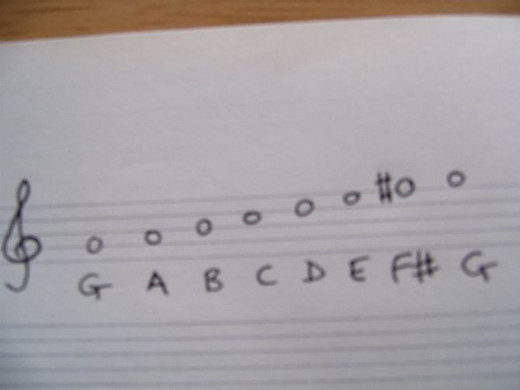
The arpeggio
Here you move from left to right jumping notes to play the chord of C
The Arpeggio
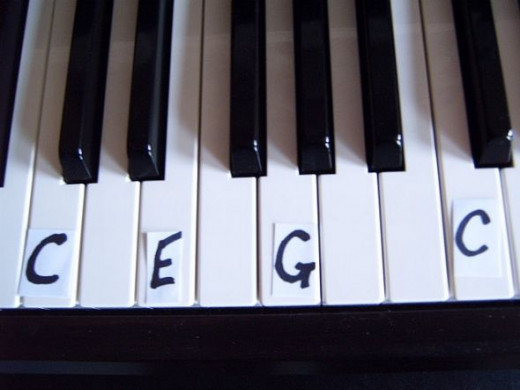
What is an arpeggio?
An arpeggio is a chord which is played as it would be on a harp. You take the first,third, fifth and eighth note of the scale and play them in succession. You also use these notes for the triad, but this time they are played together. This gives you the chords which are used for the harmony, under a melody. The melody is the tune of the piece, the harmony is the supporting music under the melody. A chord is any two or more notes played at the same time.How are you coping with theory of music?
C major arpeggio
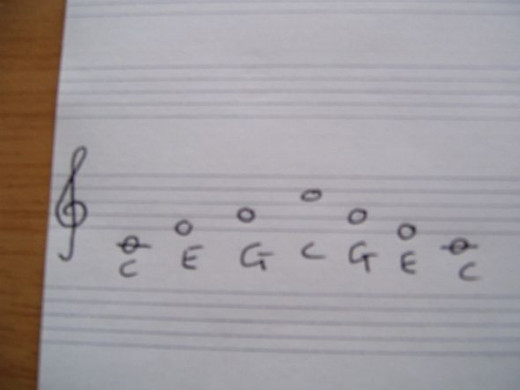
The C major triad
If you take the first three notes of the arpeggio and write them one on top of the other, that is play them at the same time you will have a chord of C major
A Link To Free Music Theory Worksheets
- Music theory worksheets
I've told you how to work things out, now you need lots of practice. Use these free worksheets to get that practice.
Great care must be taken in writing notes
In the G major arpeggio, in the example above, I have left in a poorly written D, so that you can see how exact you need to be when writing music. Otherwise anyone reading it ,or marking it will not be sure what you mean. The notes on the lines, that is the notes with the lines running through them should have the line central to the note. Notes in the spaces should just touch the lines on either side, but not run over them.
The cycle of fifths takes us next to D major
Here we keep the F sharp we had in G major and also use a C sharp
D major
Scale, arpeggio and triad
D major
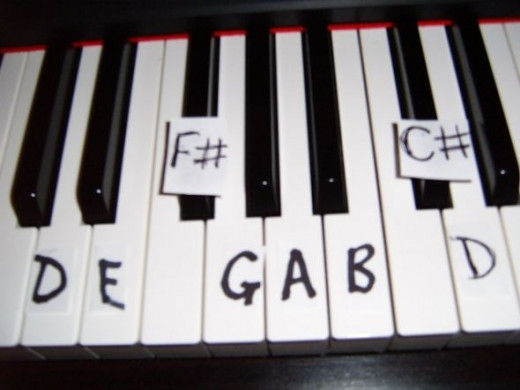
Notice the pattern of tones and semitones is still the same. So the tune of the scale still sounds the same.
D major arpeggio
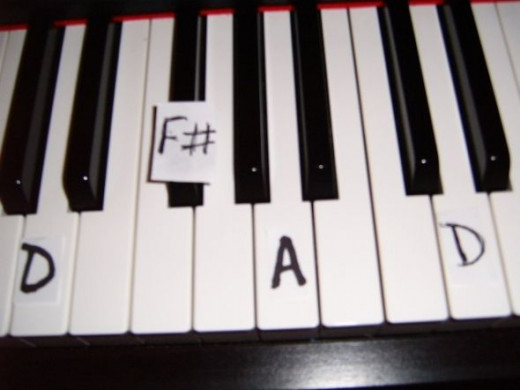
D major triad
